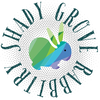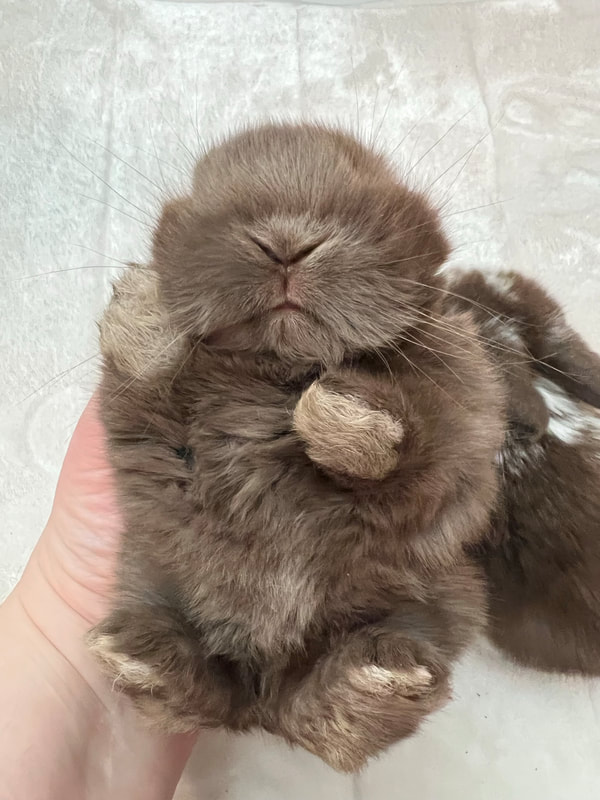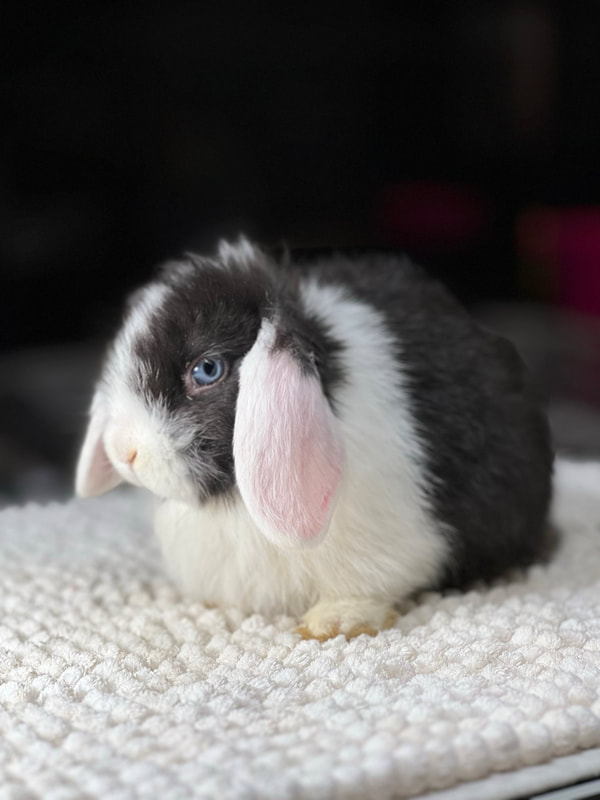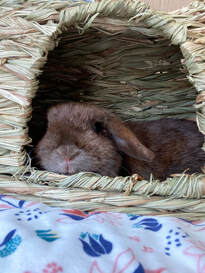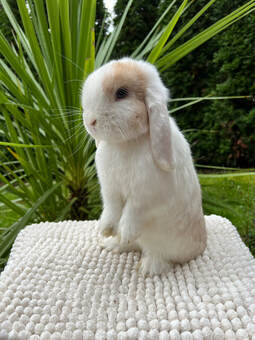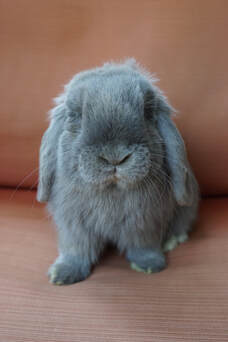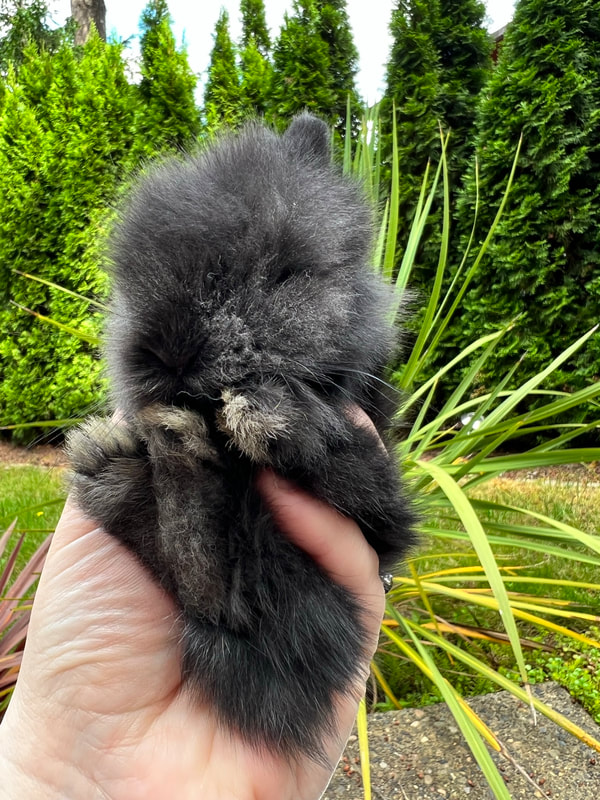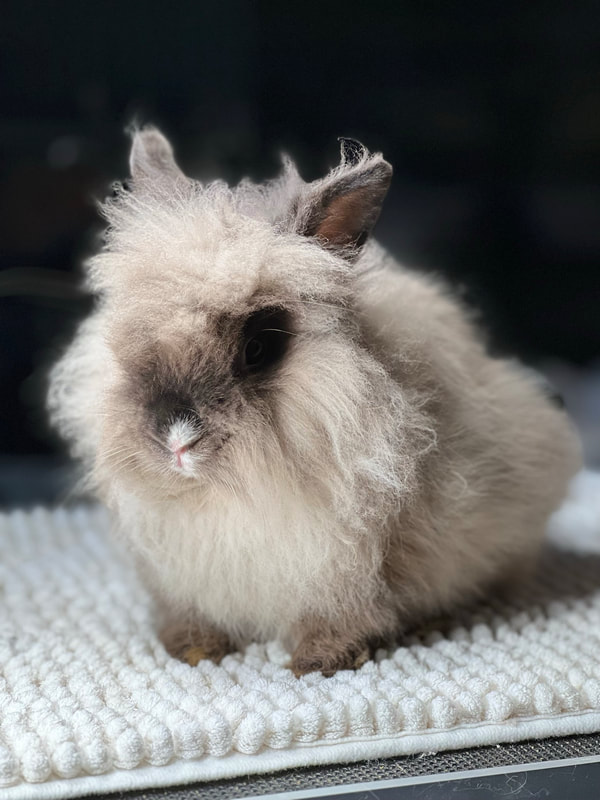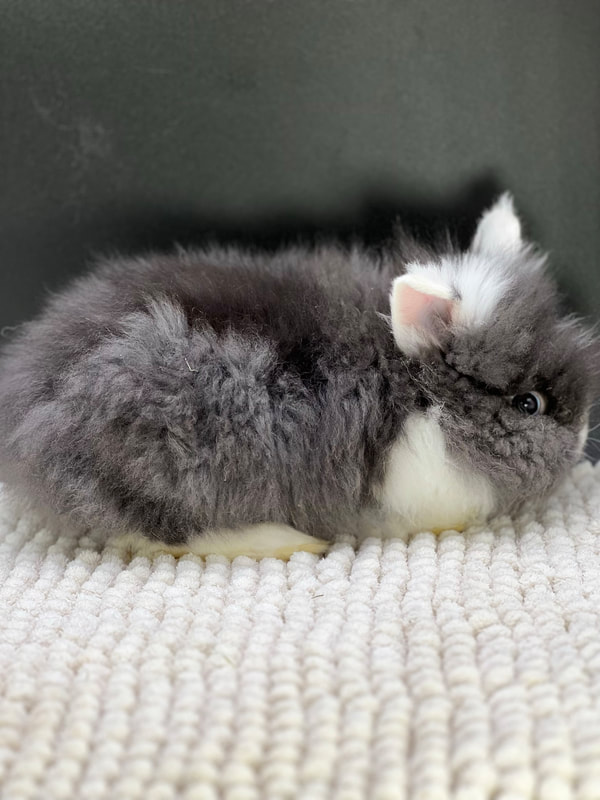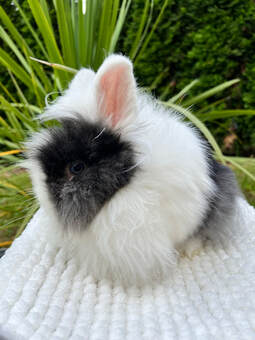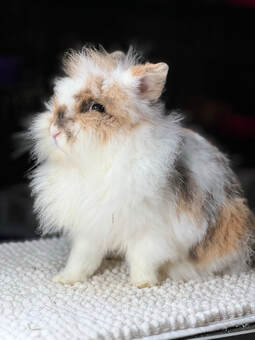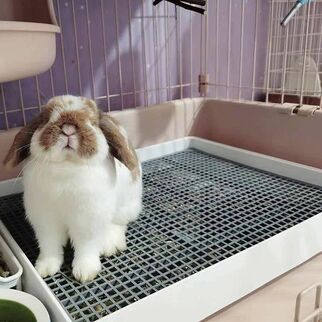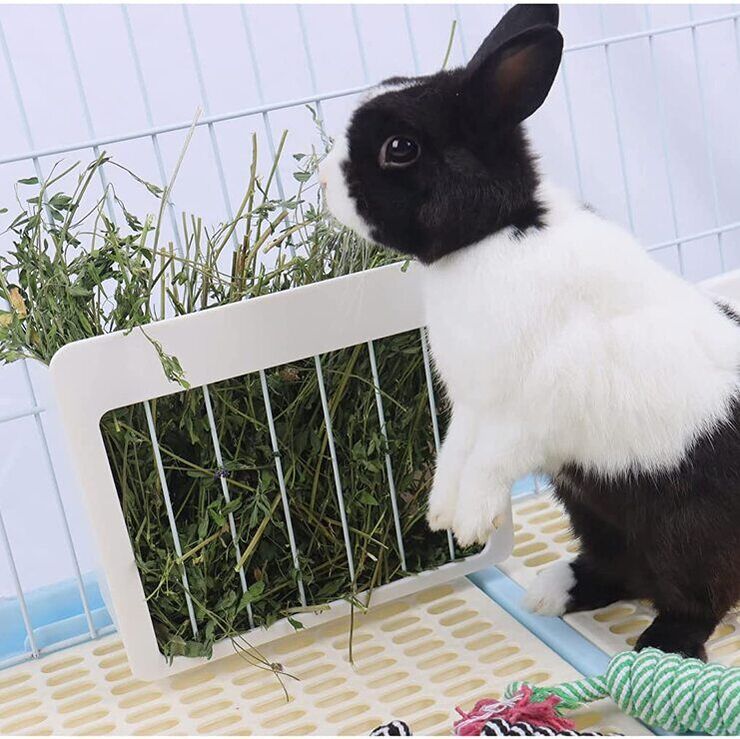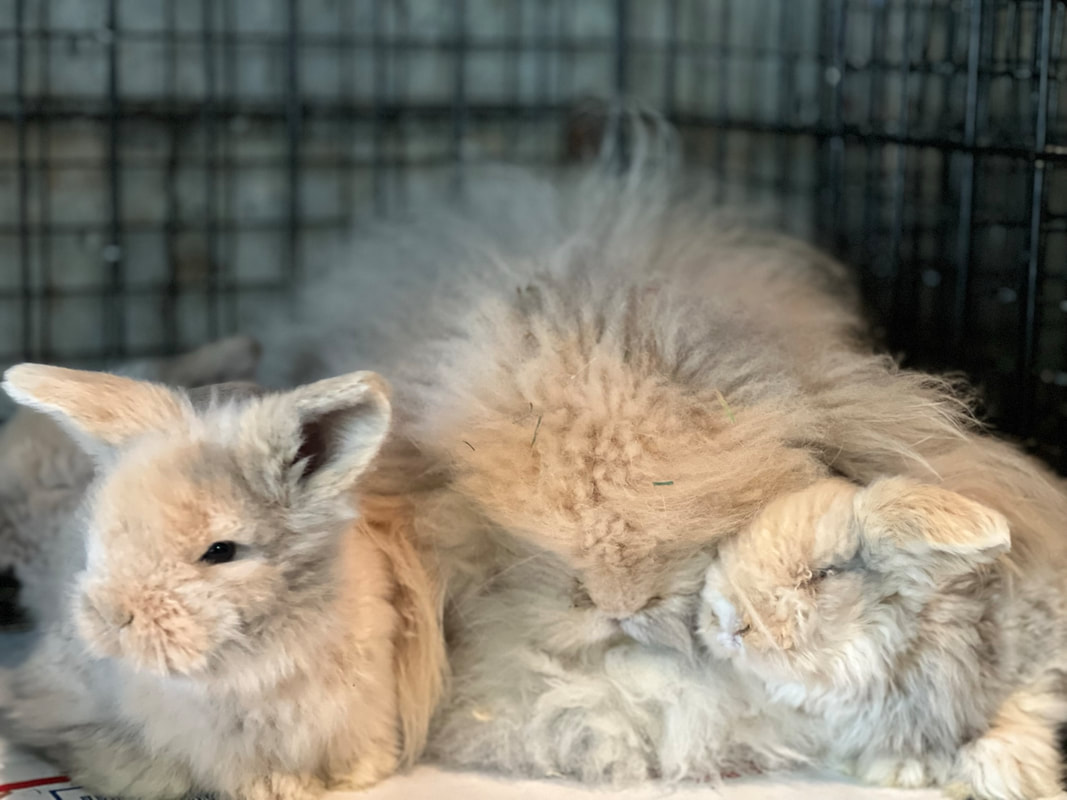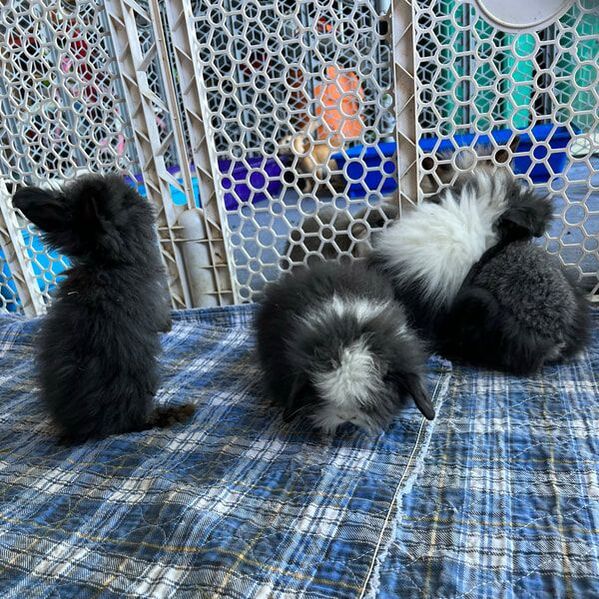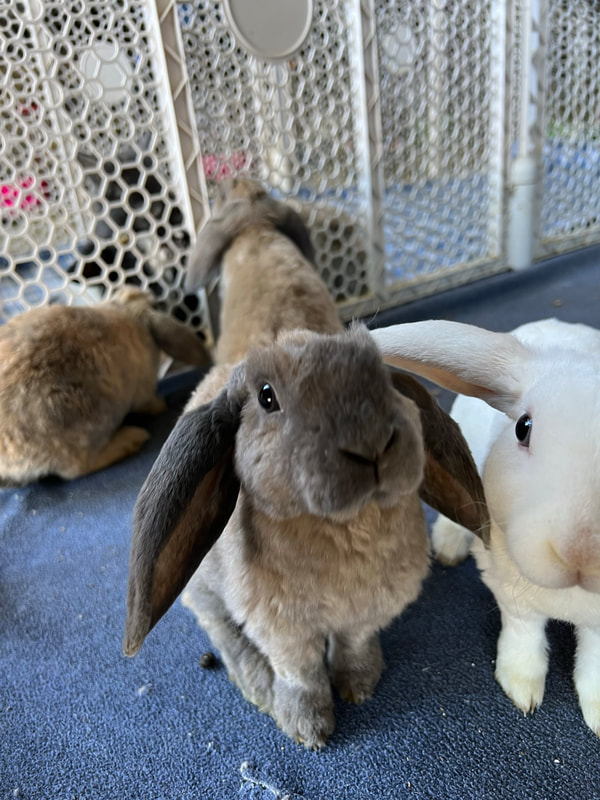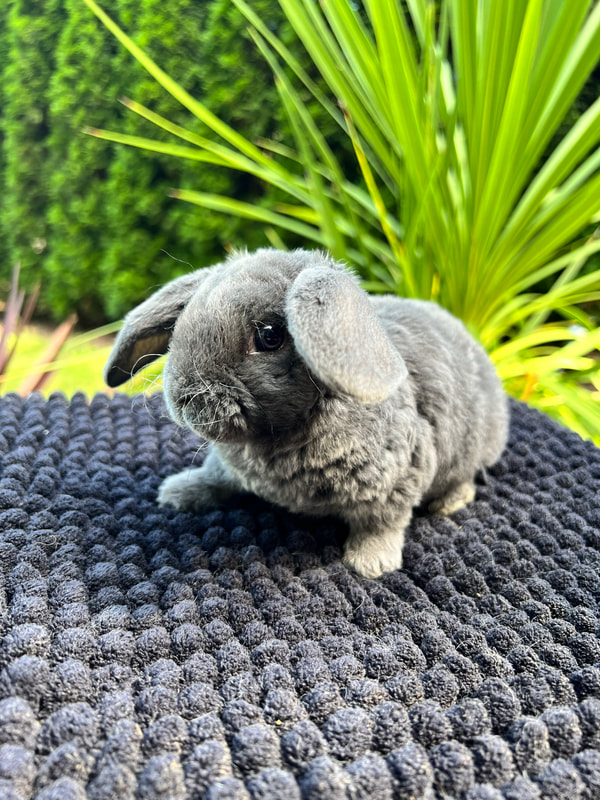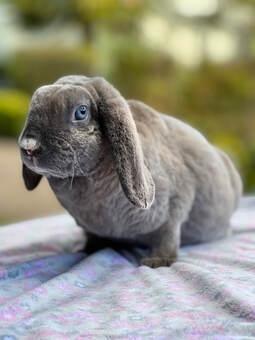-
Holland Lop
-
Lionhead
-
Teddywidder
-
Mini Plush Lop
<
>
Holland Lop
|
Holland lops are a small, compact breed of rabbit which has a short, stocky body, a broad head, with a well- defined crown (or puff of fur/cartilage) at the back of the head, and the ears are lopped (hanging downwards rather than standing erect). Their rollback fur is short, dense, and glossy when in good condition. A Holland Lop will weigh between 2-4lbs full grown. Brood does can weigh in the 5lb range in which case about half the babies in her litter can genetically weigh more than the average sized Holland lop. We do not guarantee weight on any baby from us.
Holland Lops come in a variety of colors and patterns. It's completely normal for lop babies to have helicopter ears for the first few months of their life. As they mature, even at 2 months their ears get floppy. When we're taking our baby pictures it's typical for ears to be all over the place. Holland Lops are typically social, curious and like to be part of the action around them. They do really well in social pairs or housed with one or more bunny friends. They make excellent companion pets and therapy bunnies due to their friendly personalities. |
Care Difficulty
|
Lionhead
|
Lionheads are a newer breed in the US, originating in Belgium and France. They were recognized by the ARBA in 2014 and have since become competitive in show and as house rabbits.
Lionheads are small weighing 2-3.5lbs with thick, woolly, soft fur. Depending on the number of genes from each parent, they can be single or double maned. Single maned Lionheads have one copy of the mane gene. They don’t always have a mane or have a mane as a baby and then lose it as they get older. Their mane is usually wispy and thin, disappearing overtime. Often single maned Lionheads are the product of a purebred double maned Lionhead and a rabbit of another breed in order to improve lines or introduce specific characteristics, colors or type. Double mane Lionheads have two copies of the mane gene. One from mom and one from dad. They typically have a thick mane around their head and rump, a “skirt”. A double maned Lionhead is a product of two single maned Lionheads, in which they will have siblings with single manes in their litters, or two double mane Lionhead parents. These fluff beans are very social and often learn their names. They are curious, adventurous and loyal. They often bond well to their primary human companion and make fun companion pets. A lot of information on the internet states that Lionheads are difficult to care for due to their coat. This is simply untrue. Lionheads are actually relatively easy to care for when they are quality breeding stock. Like all bunnies, the key is quality. Lionheads that are bred for excellent fur type have easy to care for wooly coats. During a babies first molting period, it's better to brush them often to help their very soft "dead coat" pull out. Once their adult coat is established over brushing can actually damage their fur so brushing as needed and during molting period is often enough. |
Difficulty of Care
|
Teddywidder
|
Teddywidder is an extremely rare German rabbit breed that goes by several names including; Teddyzwerg, Teddykaninchen and Teddy Dwarf Rabbit. They are a dwarf breed that grows to about 2.5-3.5 lbs full grown. They have floppy ears and extremely long (2+") soft wool fur that grows all over their entire body, including their face and ears. They have two wool and two main genes, which is what makes them fluffy all over.
In the U.S. there is an American Teddywidder version being created that does not use European lineage. We have both European and American lines in our heard does and bucks. Teddywidders are lap bunnies! They are extremely docile and are absolutely amazing little fluff balls of love! They thrive on being cuddled and held, which makes them ideal companion and therapy pets. They do require maintenance to keep them mat free. We do suggest keeping your Teddywidder bunny in a Lion Cut if you want to keep them at an easy care 3 out of 5 level of maintenance. Specific tips to keep your Teddy clean and mat free:
|
Care Difficulty
|
Mini Plush Lop
|
American Mini Plush Lops are a new rare breed in the US created by Devie D’Anniballe over several generations. This breed is still being perfected by a small number of reputable breeders in the US with the goal to be presented in the ARBA as an accepted breed.
European Plush Lops are a recognized breed in Europe and there are a small handful of breeders in the US and Canada who have imported Plush in order to improve the American Mini Plush Lop lineage. We have Mini Plush Lops from both American and European lines. Mini plush lops weigh between 2.5-4.5lbs full grown and have short dense fur that is plush (like a blanket). They have floppy ears and round, short, sturdy bodies. They do shed their coat once a year but do not shed much or at all the remainder of the year. They are considered hypoallergenic. Mini Plush Lops have puppy like personalities and make excellent companion and therapy pets. They have a well rounded personality, can be outgoing, adventurous and curious. They have a tendency to be social love bugs, enjoy being held, cuddled and have people connections. They are easy to harness train and often respond to their names. |
Care Difficulty
|
